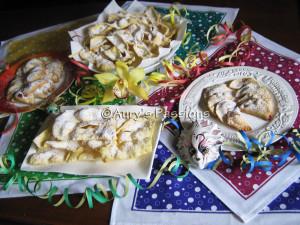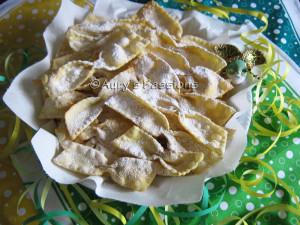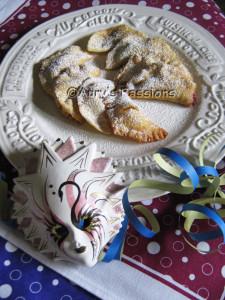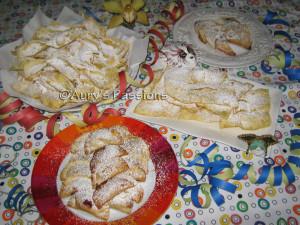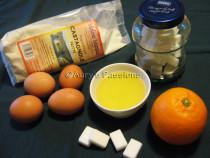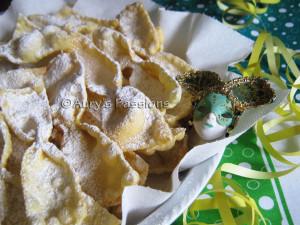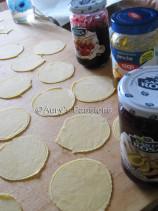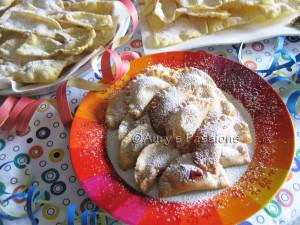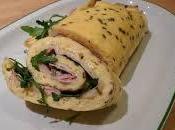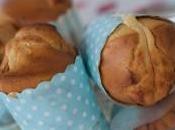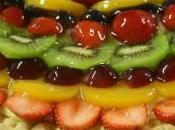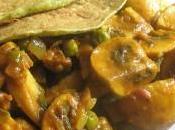A casa mia da domenica non si fa altro che confezionare
dolci di tutti i tipi, tutti caratteristici del carnevale e da mangiare rigorosamente entro oggi… io avevo fatto un fioretto due settimane fa: niente dolci fino a
Pasqua. Ma con tutta la roba che mi è passata davanti agli occhi nelle ultime 48 ore… ho ceduto! Mia mamma ha preparato i
fiocchetti, che sono i suoi preferiti; mio babbo si è dato alla sua specialità, le
castagnole; io ho fatto un tentativo con le
chiacchiere; e per non farci mancare niente abbiamo preparato anche dei
mini-cassoncini alla marmellata. Spiegatemi voi come avrei potuto resistere…
Da quando è stato pubblicato, il post sulle
tagliatelle dolci di carnevale è in assoluto il più letto sul blog con oltre 200 visite in poco più di una settimana. Spero che anche questo post dell’ultimo minuto possa offrirvi degli spunti per preparare dei caratteristici dolci di carnevale.
Iniziamo con le
castagnole. Avendo scoperto qualche tempo fa il preparato per castagnole fritte del
Molino Maraldi, noi ricorriamo a questo piccolo trucchetto per preparare delle castagnole coi fiocchi. Aggiungendo al preparato in confezione da 500 gr pochi ingredienti freschi, come 4 uova intere, 125 gr di zucchero, 7 cucchiai di olio di semi e il succo di un’arancia si ottiene rapidamente un impasto pronto per la cottura. Con l’aiuto di due cucchiai, meglio se bagnati spesso nell’acqua per aiutare l’impasto a scivolare meglio, si formano delle palline grandi come noci che si fanno friggere in abbondante olio caldo fino a che risultano dorate. Una bella spolverata di zucchero a velo quando sono fredde ed ecco delle castagnole da leccarsi i baffi.
Per gli altri dolcetti – fiocchetti, chiacchiere e cassoncini – dovete invece preparare una sfoglia, che a casa mia si fa ad occhio. Diciamo che con 450 gr di farina, 5 uova intere e un pizzico di bicarbonato si prepara una bella quantità di dolci fritti. Se l’impasto risulta morbido aggiungete della farina; se risulta duro aggiungete un po’ di latte. Con il mattarello stendete la sfoglia il più sottile possibile: i dolci si cuoceranno subito e risulteranno più croccanti.
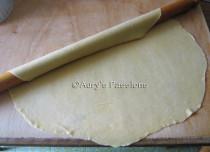
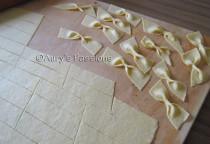

Fiocchetti e chiacchiere si differenziano solo nella forma. Come dice la parola stessa, i fiocchetti sono a forma di fiocco e si preparano ricavando dei rettangoli di sfoglia di 8-10 cm di larghezza per 3-4 cm di altezza, chiusi al centro come a formare un fiocco, appunto. Le chiacchiere sono invece più larghe, diciamo 10-12 cm di larghezza per 7-8 cm di altezza, con due tagli paralleli lunghi circa 5 cm al centro. Si frigge tutto in olio di semi ben caldo, fino a doratura e anche in questo caso si spolvera con abbondante zucchero a velo. Difficile resistere!
Per preparare i cassoncini fritti la sfoglia deve essere un po’ più spessa; con un bicchiere ricavate dei dischi di 6-7 cm di diametro, riempiteli con un cucchiaino della marmellata che preferite e chiudeteli a formare delle mezzelune. Friggete in abbondante olio caldo e spolverate con zucchero a velo. Una bontà cui non saprete dire di no!
L’idea di dover friggere potrebbe far desistere qualcuno dal preparare in casa i dolci di carnevale, ma basta tenere la finestra aperta mentre si frigge per eliminare l’odore… vi assicuro che fatti in casa questi dolcetti sono delle vere delizie, ottime per festeggiare la fine del carnevale. Buon martedì grasso a tutti
##########
Here we go, folks! Today’s Pancake Tuesday, i.e. the last day of the carnival; it will be Lent soon and according to tradition you shouldn’t eat any fat and loaded food until Easter. That’s why everybody eat like crazy during carnival, especially on its last week.
My parents and I have been busy making all kind of carnival sweets since last Sunday, and before today gets to an end we have to eat them all… Well, actually I made a vow two weeks ago: no sweets until Easter. Just have a look at what was within hand’s reach in the past few days: no chance that I could do it! My mum made “fiocchetti”, absolutely her favourite; my dad prepared his speciality, “castagnole”; I did my first attempt ever to make “chiacchiere”; and not to miss anything we also made some mini-cresses filled with marmalade. How could I ever resist to temptation?
I was somehow surprised that my post on carnival sweet fried tagliatelle was read more than 200 times since it was published just a week ago. Hope this last minute article on carnival sweets might give you some useful hints as well.
Let’s start with the typical fried sweets called “castagnole”. Unfortunately I do not have any recipe to give here, as since we discover it we’ve been using a specific compound for “castagnole” that only requires you to add some fresh ingredients – 4 eggs, 125 gr of sugar, 7 tablespoons of seed oil, the juice from an orange – to get a 500 gr dough ready to cook. Together with some other specific compounds this is made available in some selected grocery stores by Maraldi Mill, based at very few miles from my own town. Once you get your soft dough, make little balls with the help of two tablespoons (better if both wet in water as this helps the dough slip) and fry them in abundant seed oil until they’re golden. Sprinkle them with powdered sugar once cold and they’ll make you lick your lips.
As regards the other sweets – “fiocchetti”, “chiacchiere” and mici-cresses – you’ll have to prepare a dough similar to that used for hand made pasta. We usually measure ingredients by sight, but to give you an idea mixing 450 gr of flour with 5 eggs and a pinch of baking powder will let you prepare many fried sweets. Add some flour if the dough’s too soft, or some milk if it’s too tough. Roll the dough out with a rolling pin and get it as thin as you can: the sweets will fry quickly and will be much more crispy. “Fiocchetti” and “chiacchiere” differ one another only in the shape.
The same word “fiocchetti” means little bows and they’re obtained by cutting the pastry into rectangles of 8-10 cm long by 3-4 cm high which you’ll close in the middle as to form the bows. “Chiacchiere” (actually chit-chat, but don’t ask me why they are called like this) are longer rectangular instead, let’s say 10-12 cm long by 7-8 cm high with two parallel cuttings of 4-5 cm right in the middle. Fry everything in hot seed oil until the sweets are golden and sprinkle everything with abundant powdered sugar. No way you could resist!
The pastry should be somehow thicker to make fried cresses; use a glass to make discs of 6-7 cm in diameter, fill them up with your favourite marmalade and close them to form crescents. Fry them in abundant hot seed oil and sprinkle with powdered sugar. These are so tasty you could barely stop eating!
If you focus on the idea of frying you’ll probably won’t be willing to prepare home made carnival sweets. But you could just leave the window open while frying and the bad smell won’t be there for long… believe me, carnival sweets are always good; home made they’re simply delicious. And in my opinion they’re an excellent way to celebrate both Pancake Tuesday and the end of the carnival.
Happy Pancake Tuesday then!

